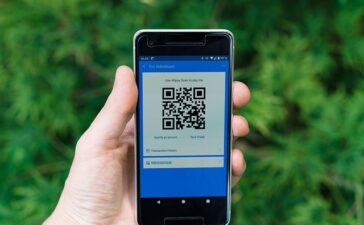In our fast-paced and technologically-driven world, it’s no surprise that wireless charging has become increasingly popular in recent years. This helpful guide will teach you everything you need to know about wireless charging, from the basics of how it works to the different types of devices that are compatible with this type of charging.
So, first things first, what exactly is wireless charging?
Wireless charging technology uses an electromagnetic field to transfer energy between two devices, typically a charger and a mobile device like a smartphone. This process is often referred to as “inductive charging.” This type of charging is different from “conductive charging,” which uses physical contact between the charger and the device to transfer energy.
What are the benefits of wireless charging?
There are a few key benefits to using wireless charging. First, it’s more convenient than traditional charging methods because you don’t have to fumble with cords and plugs. Second, it’s typically faster than wired charging, so you can get your device up and running in no time. And finally, wireless charging is much easier on your device’s battery, which means it will last longer over time.
What are the different types of wireless chargers?
There are two main types of wireless chargers: Qi and PMA. Qi is the most common type of wireless charger, and it uses inductive charging to transfer energy between devices. PMA, on the other hand, uses magnetic resonance to transfer energy, which is a more efficient method but it’s not as widely compatible with devices.
What devices are compatible with wireless charging?
Most newer smartphones, like the iPhone X, iPhone Pro Max, and Samsung Galaxy S8, are compatible with Qi wireless charging. However, there are a few older models that are not compatible, so it’s always best to check before you buy a wireless charger.
How fast is wireless charging?
The speed of wireless charging depends on a few factors, including the type of charger you’re using and the device you’re charging. In general, though, wireless charging is much faster than traditional wired charging methods. There are also fast wireless chargers available on the market that can charge your device even faster.
What are the drawbacks of wireless charging?
There are a few potential drawbacks to wireless charging. First, it can be slower than wired charging in some cases. Second, you need to make sure that your device is properly aligned with the charger, which can be a bit tricky. And finally, wireless chargers can be more expensive than traditional chargers.
Why is wireless charging becoming more popular?
Wireless charging is becoming more popular for a few reasons. First, it’s a more convenient way to charge your device. Second, it’s typically faster than wired charging methods. And finally, it’s easier on your device’s battery, which means it will last longer over time.
Should I switch to wireless charging?
There’s no right or wrong answer here. It ultimately comes down to personal preference. If you’re looking for a more convenient way to charge your device, or if you want a charger that’s easier on your device’s battery, then switching to wireless charging might be a good option for you. However, if you’re looking for the fastest possible charging speed, then you might want to stick with traditional wired chargers.
What are the best wireless chargers?
There are a few different wireless chargers on the market, but not all of them are created equal. Some of the best wireless chargers available include the Anker PowerWave 7.5, the Belkin Boost Up Wireless Charging Pad, and the mophie wireless charging base. There are other brands as well, so be sure to do your research before you buy a wireless charger.
Why is my wireless charger not working?
There are a few potential reasons why your wireless charger might not be working. First, make sure that your device is properly aligned with the charger. Second, check to see if your device is compatible with the charger you’re using. And finally, make sure that the charging base is plugged into a power outlet.
Wireless charging is a great way to charge your device without having to fumble with cords and plugs. It’s also typically faster than wired charging, so you can get your device up and running in no time. And finally, wireless charging is much easier on your device’s battery, which means it will last longer over time. If you’re looking for a more convenient way to charge your device, or if you want a charger that’s easier on your battery, then wireless charging is definitely worth considering.









